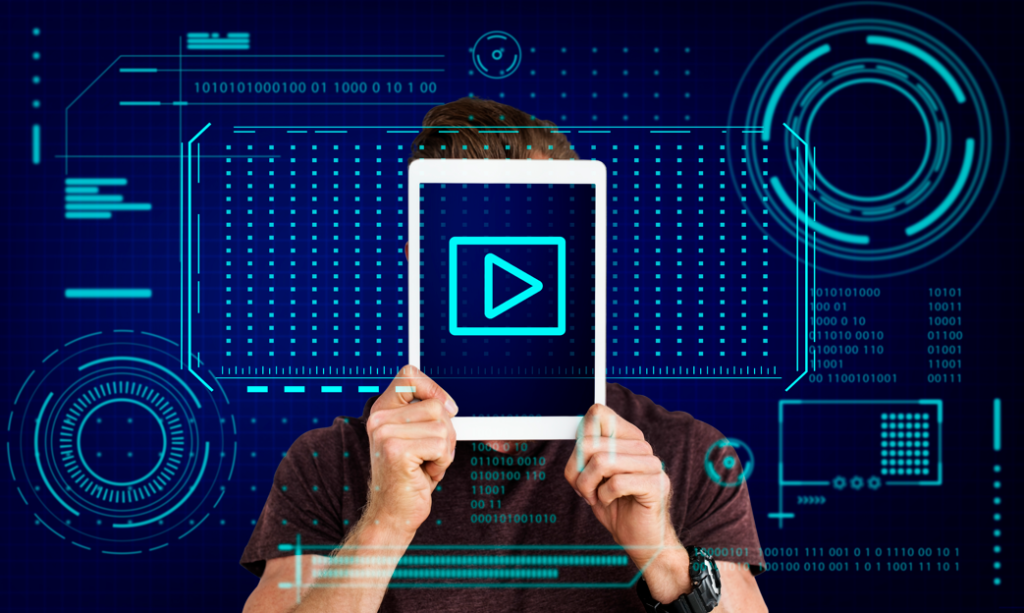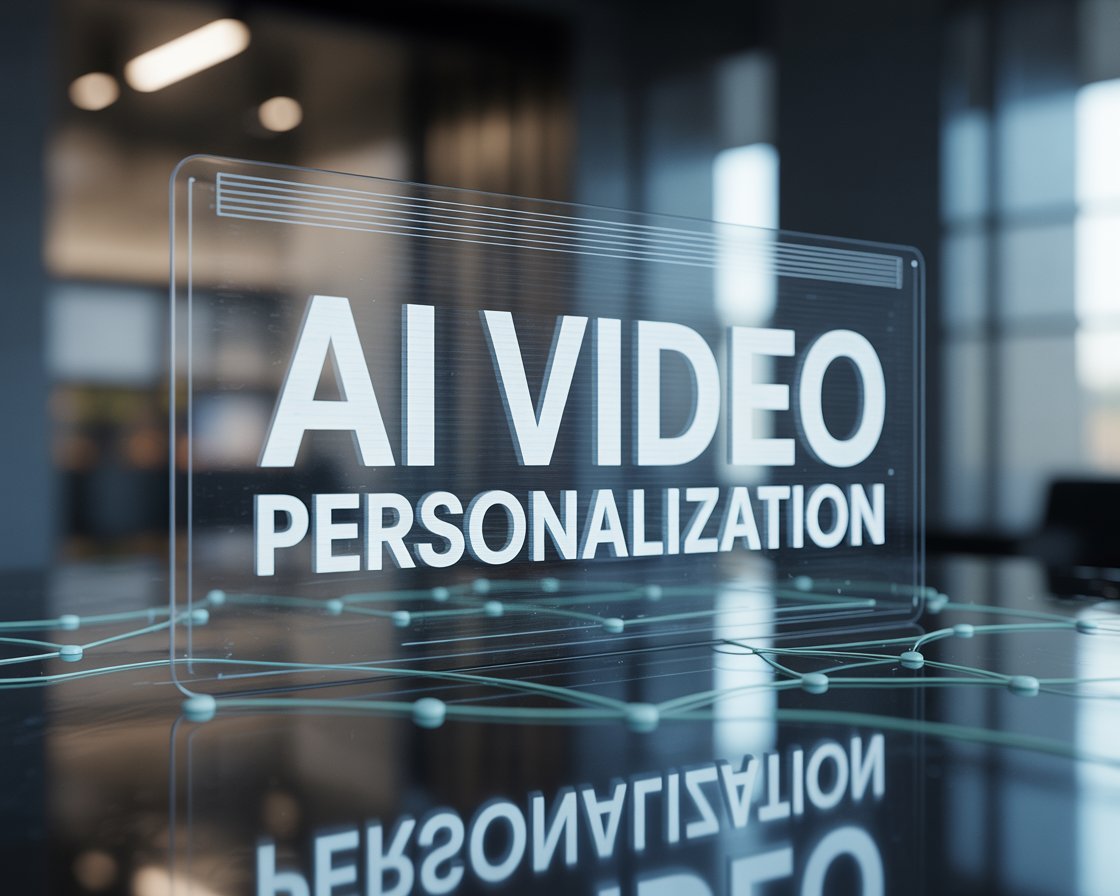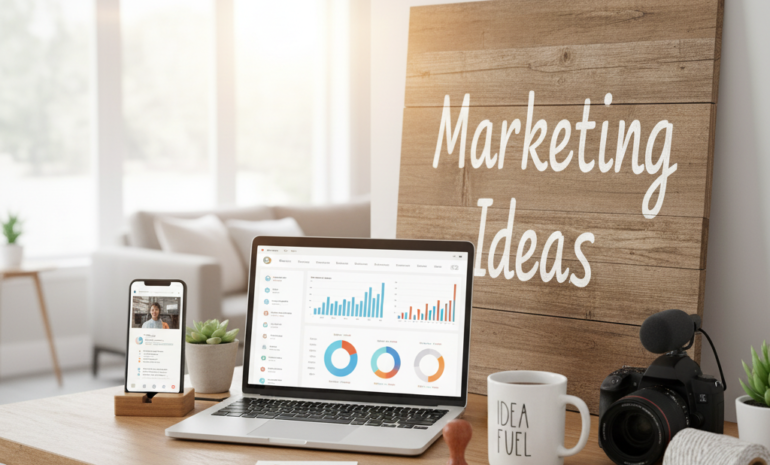Video marketing has always been one of the most powerful ways for brands to connect with audiences. In recent years, however, the rise of artificial intelligence (AI) has transformed what’s possible.
With AI video personalization, marketers are no longer limited to one-size-fits-all campaigns. Instead, they can deliver highly targeted, relevant, and engaging videos to each viewer based on their demographics, interests, behaviors, and buying journeys.
This article explores AI-driven video personalization in detail , what it is, how it works, why it matters, its benefits, best practices, real-world examples, tools, and how to start implementing it for your brand.
What is AI video personalization?
AI video personalization is the process of using machine learning algorithms, data analysis, and automation to create customized video experiences for each viewer. Instead of sending the same video to every user, AI tailors elements such as:
- Text overlays (like the viewer’s name or location)
- Voiceovers that match local language or tone preferences
- Product recommendations inside the video
- Dynamic scenes and calls-to-action based on user behavior
- Video lengths adjusted to user attention spans
These capabilities allow brands to deliver hyper-relevant content at scale without manually editing dozens or hundreds of video versions.

Why AI Video Personalization Matters for Marketing?
Traditional video marketing works well for brand awareness but struggles with engagement and conversion because it’s generic.
Audiences today expect personalization. According to surveys, more than 70% of consumers say they are more likely to engage with marketing messages tailored to their interests.
AI enables marketers to scale personalization in a way that was previously impossible.
Key reasons why AI video personalization matters:
- Higher Engagement: Personalized videos hold attention longer.
- Increased Conversions: Viewers feel the brand “gets” them and are more likely to act.
- Improved Customer Experience: Relevance fosters trust and loyalty.
- Operational Efficiency: AI automates editing, saving time and costs.

How AI Video Personalization Works
AI-powered platforms use data and algorithms to dynamically generate or modify video content. The process typically involves:
Data Collection
Collect customer information from CRMs, social media, websites, and purchase histories to build accurate profiles for targeted, relevant personalized video campaigns.
Segmentation & Targeting
AI analyzes demographics, behaviours, and lifecycle stages to segment audiences, enabling delivery of personalized messages matching each viewer’s unique preferences.
Video Template Creation
Develop a single master video template with placeholders for names, locations, products, or offers to automatically customize content per viewer.
AI-Driven Rendering
The AI platform merges audience data with the template, dynamically generating unique personalized videos at scale without manual editing time.
Distribution & Measurement
Personalized videos are distributed across email, websites, apps, or ads, with analytics dashboards measuring engagement, conversions, and overall performance impact.
Benefits of AI Video Personalization

1. Enhanced Viewer Engagement
People are more likely to watch videos that speak directly to them. Personalized intros, names, or recommendations make viewers feel special.
2. Increased Conversions
When content aligns with a viewer’s stage in the buying journey, conversion rates can skyrocket. For example, showing personalized discounts or demos can nudge leads to purchase.
3. Cost and Time Efficiency
AI eliminates the need for manual editing, making personalization at scale cost-effective. Marketers can produce thousands of tailored videos in minutes.
4. Better Insights
Personalized campaigns generate more granular performance data, helping marketers refine strategies.
5. Competitive Advantage
Most brands still send generic videos. Early adopters of AI video personalization stand out in crowded markets.
Types of AI Video Personalization

Name-Based Personalization:
This approach uses the viewer’s name, company name, or other personal identifiers within the video.
AI systems can automatically pull data from your CRM or email list to embed personalized text, audio, or visuals directly into the video.
Geo-Targeted Personalization
AI can adapt videos based on the viewer’s location, region, or language preferences. This could mean showing different background visuals, currencies, or even voiceovers depending on the audience’s country.
For example, a clothing brand might show winter outfits to Canadian viewers and summer wear to customers in Dubai. Geo-personalization ensures relevance by matching the local culture, seasonality, or regulations.
Behavior-Based Personalization
This method tailors the video based on the viewer’s browsing patterns, purchase history, or interactions with your website/app.
AI can recommend products, display recently viewed items, or offer discounts on items abandoned in a cart, all within the video itself. It’s similar to dynamic remarketing but in a richer, more interactive format.
This makes the content hyper-relevant and helps drive faster purchase decisions.
Lifecycle Stage Personalization
Every audience member sits at a different stage of the buyer’s journey; prospects, qualified leads, and existing customers all need different messaging.
AI video personalization can automatically segment viewers and show onboarding tips to new customers, product comparisons to prospects, and upsell offers to loyal buyers.
This ensures the right message hits the right person at the right time.
Dynamic Calls-to-Action (CTAs)
Rather than showing a single static CTA, AI can dynamically change the call-to-action in real time based on the viewer’s profile or intent.
A first-time visitor might see “Learn More,” while a returning customer could see “Upgrade Your Plan” or “Claim Your Discount.” Dynamic CTAs increase conversion rates because they remove friction and lead people directly to the next logical step.
Tools and Platforms for AI Video Personalization
The market now has several platforms that make personalized videos at scale without heavy in-house development. Here’s what each one brings to the table:
1. Idomoo
A leading enterprise platform for large-scale video personalization. It combines dynamic data integration with high-quality rendering so you can automatically insert names, purchase details, or custom offers into videos.
Idomoo also supports real-time generation, viewers can get a personalized video within seconds of submitting a form.
2. Vidyard Personalized Video
Best known for B2B sales and marketing. It lets reps record or generate videos where the thumbnail shows the prospect’s name or website, creating an immediate sense of relevance.
It integrates tightly with CRMs like HubSpot and Salesforce, making one-to-one outreach faster and trackable.
3. SundaySky
Geared toward enterprise customer experience and retention. SundaySky automates thousands of video variations from a single template. It’s especially strong in industries like telecom, banking, and insurance, where it can deliver personalized onboarding, billing, or policy updates at scale.
4. Pirsonal
A flexible tool for small and mid-sized businesses. Pirsonal makes it easy to create videos where text, images, and even voiceovers change based on each viewer’s data.
It also includes email and landing page tools so you can embed personalized videos directly into campaigns.
5. Wistia Soapbox (with integrations)
While Soapbox itself is a simple recording tool, when combined with Wistia’s marketing integrations and third-party personalization apps, you can deliver customized videos directly through email or on your website.
It’s ideal for teams already using Wistia for hosting and analytics who want to dip into personalization without switching platforms.
Best Practices for AI Video Personalization
1. Start with Clear Goals
Define what you want to achieve (higher open rates, more sign-ups, better upsells) before designing personalized videos.
2. Use High-Quality Data
Personalization is only as good as the data behind it. Clean, updated, and privacy-compliant data ensures accuracy.
3. Keep Videos Concise
Even personalized videos need to respect viewers’ time. Short, impactful clips work best.
4. Maintain Brand Consistency
Ensure visuals, tone, and messaging align with your brand even as content changes dynamically.
5. Test and Optimize
A/B test different versions of personalized videos to see which elements drive the best results.
6. Respect Privacy
Always follow GDPR and other data regulations when using customer data for personalization.
Real-World Examples
Example 1: E-Commerce Retailer
An online fashion brand sends personalized videos showcasing products the viewer left in their cart, including discounts. This increases cart recovery rates.
Example 2: SaaS Company
A SaaS platform uses AI to send personalized onboarding videos to new customers, walking them through features relevant to their role.
Example 3: Financial Services
A bank sends annual review videos to clients summarizing account performance and suggesting tailored financial products.
Implementation Steps for Your Brand
Audit Your Data Sources: Ensure you have accurate, actionable customer data.
Choose the Right Platform: Evaluate AI video personalization tools based on features, integrations, and pricing.
Create Dynamic Video Templates: Work with creative teams to design flexible templates.
Integrate with Marketing Channels: Connect the platform to email, social media, websites, or apps.
Launch and Monitor: Roll out your first campaign and track metrics like watch time, click-through rate, and conversions.
Iterate and Scale: Use insights from initial campaigns to improve and expand personalization efforts.
Common Challenges and How to Overcome Them
Data Quality Issues: Clean and verify data before campaigns.
Creative Complexity: Use modular video design to simplify dynamic changes.
Privacy Concerns: Be transparent with customers about data usage.
Integration Hurdles: Choose platforms with strong API support.
The Future of AI Video Personalization
As AI technology evolves, video personalization will become even more sophisticated. We can expect:
- Real-time personalization based on live user interactions.
- AI-generated video content from text prompts.
- Deeper integration with AR/VR experiences.
- Advanced predictive analytics to anticipate user needs.
Brands that adopt these innovations early will gain a lasting edge.
Conclusion
AI video personalization is more than a trend , it’s a game changer for marketing. It combines the emotional power of video with the precision of data-driven targeting to deliver unmatched engagement and ROI.
By following best practices, using the right tools, and respecting customer privacy, marketers can create personalized video experiences that delight audiences and drive business growth.
For a brand like Brandout Adv, which helps businesses grow through smart digital strategies, AI video personalization represents a powerful addition to the marketing toolkit. It enables clients to reach customers in a way that feels human, relevant, and timely , at scale.
Frequently Asked Questions
What is AI video personalization in marketing?
AI video personalization uses machine learning and dynamic data to automatically customize video content for each viewer.
It can add names, show region-specific visuals, recommend products, or change CTAs in real time, making every video more relevant and engaging.
How does AI personalize videos at scale?
Platforms like Idomoo or SundaySky use templates combined with data from CRMs, email lists, or website behavior.
AI automatically inserts personalized elements (text, images, offers, voiceovers) into each video so you can send thousands of unique versions without manual editing.
What are the benefits of using personalized videos in marketing?
They improve click-through rates, retention, and conversions by making the content feel one-to-one instead of mass-produced.
Personalized videos also reduce churn, increase upsell opportunities, and strengthen brand loyalty because viewers feel directly addressed.
Which businesses can benefit most from AI video personalization?
Any business with customer data can use it.
E-commerce brands can highlight recommended products, SaaS companies can create tailored onboarding videos, and B2B firms can personalize outreach at the account level.
It’s especially effective for companies with large audiences or high-value customers.
Is AI video personalization expensive or complex to implement?
Not necessarily. Tools like Vidyard or Pirsonal make entry-level personalization accessible to small teams, while platforms like SundaySky handle enterprise-scale campaigns.
Most integrate with existing CRMs and marketing platforms, reducing the need for heavy technical work.




